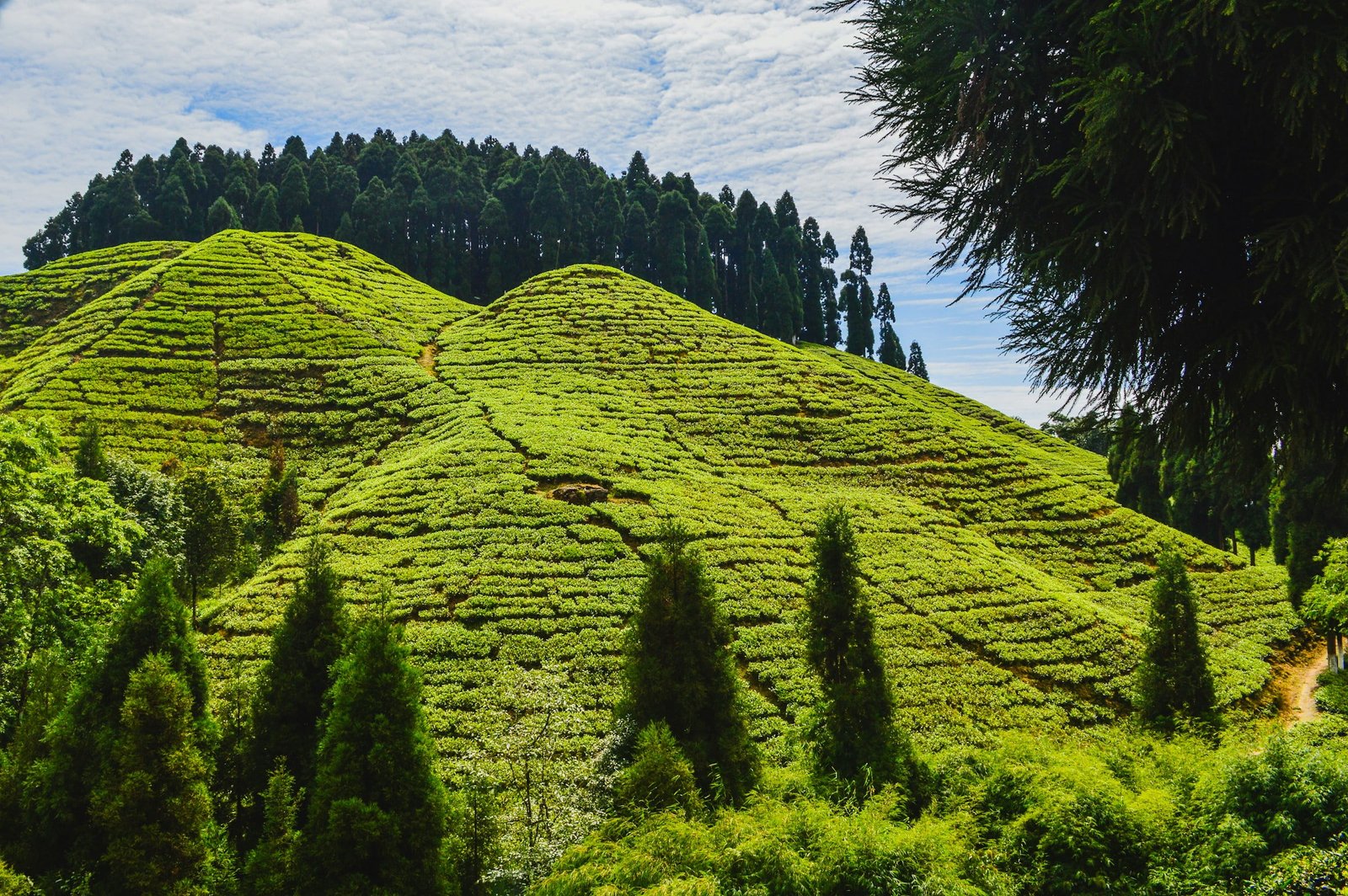Understanding Darjeeling Tea Flushes: A Guide to the Unique Flavors of Each Harvest
Darjeeling tea, often hailed as the “Champagne of Teas,” is renowned for its delicate flavors, rich history, and the unique characteristics imparted by its seasonal harvests. These seasonal harvests, known as “flushes,” play a crucial role in defining the taste, aroma, and overall quality of the tea. In this article, we’ll explore the different flushes of Darjeeling tea, each offering a distinct experience for tea enthusiasts. Understanding these flushes will help you appreciate why Darjeeling tea holds such a prestigious place in the world of fine teas.
What is a Tea Flush?
A “flush” refers to the period during which new leaves sprout on the tea plants, typically following a period of dormancy. The timing of these flushes, along with the specific climatic conditions during each period, greatly influences the flavor, aroma, and appearance of the tea. Darjeeling tea is traditionally harvested in four primary flushes, each offering a unique flavor profile that appeals to different palates.
The First Flush: The Spring Harvest
The First Flush of Darjeeling tea is the earliest harvest of the year, occurring in late March through April. As the first leaves to sprout after the winter dormancy, these young and tender leaves are highly prized for their fresh and delicate flavor. The first flush produces a light-bodied tea with a bright, golden color and a floral, slightly astringent taste. It is often described as having a “spring freshness” with a prominent floral aroma, making it a favorite among tea connoisseurs.
The briskness and clarity of the first flush Darjeeling tea are unmatched, and its delicate nature requires careful brewing to fully appreciate its nuanced flavors. This flush is highly sought after and often commands higher prices due to its limited availability and the labor-intensive process of hand-picking the young leaves.
The Second Flush: The Summer Harvest
The Second Flush of Darjeeling tea is harvested in May and June, during the peak of summer. This flush is famous for producing a more robust and full-bodied tea compared to the first flush. The second flush Darjeeling tea is known for its characteristic “muscatel” flavor, a term used to describe the rich, fruity, and grape-like notes that develop in the tea during this period.
The leaves of the second flush have a darker hue, and the brewed tea has a deep amber color. The flavor is more mature, with a complex balance of fruitiness, spiciness, and a slight earthy undertone. This flush is particularly popular among those who prefer a stronger and more pronounced flavor in their tea. The muscatel flavor, unique to this flush, is often considered the hallmark of Darjeeling tea and is highly prized in the global tea market.
The Monsoon Flush: The Rainy Season Harvest
The Monsoon Flush, also known as the “Rainy Flush,” occurs during the heavy monsoon season in July and August. The abundant rainfall during this period leads to a rapid growth of the tea leaves, resulting in a tea that is less delicate than the earlier flushes. Monsoon flush Darjeeling tea is generally stronger, bolder, and has a darker color, but it lacks the fine nuances and complexity of the first and second flushes.
Due to its robust nature, monsoon flush tea is often used in blending and for making chai or other spiced teas. It is typically more affordable than the first and second flushes, making it accessible for everyday consumption. While it may not have the same prestige as the earlier flushes, monsoon flush tea is still valued for its strong flavor and versatility in various tea preparations.
The Autumn Flush: The Late Harvest
The Autumn Flush of Darjeeling tea is the final harvest of the year, taking place in October and November as the temperatures begin to cool. The autumn flush produces a tea that is often described as having a rich, full-bodied flavor with a smooth, mellow character. The tea leaves from this flush are darker, and the brewed tea has a deep, coppery color.
The flavor profile of autumn flush Darjeeling tea is less brisk than the first flush but more rounded and balanced. It combines the fruity and floral notes of the earlier flushes with a warm, earthy undertone, making it a comforting tea for the colder months. The autumn flush is cherished for its smoothness and is often enjoyed without milk or sugar to fully appreciate its depth of flavor.
How to Choose the Right Darjeeling Flush for You
Choosing the right Darjeeling tea flush depends on your personal taste preferences. If you enjoy a light, delicate tea with a floral aroma, the first flush is ideal. For those who prefer a stronger, more complex tea with fruity and muscatel notes, the second flush is the best choice. If you like a bold, robust tea, the monsoon flush is perfect for blending or making chai. Lastly, the autumn flush offers a rich, smooth tea that is perfect for those who appreciate a well-rounded flavor profile.
The Unique Experience of Darjeeling Tea Flushes
Each flush of Darjeeling tea offers a unique experience, reflecting the changing seasons and the skillful craftsmanship of the tea producers in this renowned region. Understanding the differences between the flushes allows you to appreciate the diversity and complexity of Darjeeling tea, making each cup a journey through the hills of Darjeeling.
This article is optimized to help tea enthusiasts and casual drinkers alike discover the rich world of Darjeeling tea flushes. Whether you’re searching for the best first flush Darjeeling tea or curious about the unique muscatel flavor of the second flush, this guide provides the insights you need to enjoy Darjeeling tea to its fullest.


